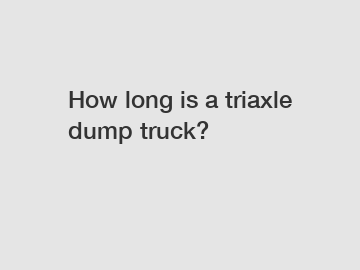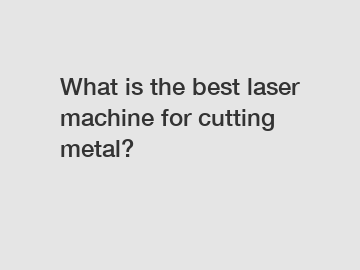What does a palletizer do?
Introduction
In the world of manufacturing and logistics, efficiency is king. The ability to swiftly and accurately arrange products on pallets for storage and transportation is a crucial component of this efficiency. This is where the palletizer comes into play. Palletizers are specialized machines designed to automate the stacking of products on pallets, revolutionizing the way industries handle packaging and distribution. In this comprehensive guide, we will delve into the inner workings of palletizers, their types, and the pivotal role they play across various sectors.
The Essence of a Palletizer
A palletizer, as the name suggests, is a machine specifically designed to palletize products or goods. Its primary function is to efficiently and systematically arrange items on pallets according to a predefined pattern, ensuring stability during storage and transportation. Palletizers are employed in a wide array of industries, from manufacturing and warehousing to distribution and logistics.
The duties of a palletizer can range from stacking bags of cement in a construction materials factory to neatly arranging cartons of packaged foods in a distribution center. Regardless of the application, palletizers significantly improve productivity, reduce labor costs, and enhance the safety of palletizing operations.
Components of a Palletizer
To understand the inner workings of a palletizer, it's essential to be familiar with its key components:
Input Conveyor: This is where the products or goods to be palletized are transported to the palletizing area. The conveyor may be manual or automated, depending on the level of integration with other machinery.
Robotic Arm or Palletizing Manipulator: The core component of a palletizer is the robotic arm or palletizing manipulator. This sophisticated piece of equipment is responsible for picking up items from the input conveyor and placing them on the pallet. The design and capabilities of this component can vary widely depending on the specific application and industry requirements.
Pallet Dispenser: In some palletizer configurations, a pallet dispenser is integrated into the system. It automatically supplies empty pallets to the robotic arm, ensuring a continuous palletizing process.
Control Panel: The control panel is the brain of the palletizer. It allows operators to program the desired stacking pattern, adjust settings, and monitor the machine's performance.
Safety Features: Palletizers are equipped with various safety features, such as emergency stop buttons, light curtains, and safety barriers, to ensure the safety of operators and prevent accidents.
How a Palletizer Works
The operation of a palletizer involves several key steps:
Product Input: Products or goods are transported to the palletizing area via the input conveyor. Depending on the specific configuration, products can be fed to the palletizer in various ways, such as single items, layers, or entire pallet loads.
Programming: The operator uses the control panel to program the desired stacking pattern and palletizing sequence. This includes specifying the arrangement of products on the pallet, the number of layers, and any specific orientation requirements.
Pallet Preparation: If a pallet dispenser is integrated into the system, it automatically supplies an empty pallet to the palletizing manipulator. Otherwise, an operator manually places a pallet in the designated position.
Picking and Placement: The robotic arm or palletizing manipulator starts picking up products from the input conveyor one by one or in layers, following the programmed pattern. It then accurately places them on the pallet in the desired configuration. This process continues until the pallet is fully loaded.
Interlayer Sheets and Topping (Optional): In some cases, interlayer sheets or dividers are added between layers to protect the products from damage. Additionally, a topping layer may be added to complete the pallet. These steps, if necessary, are also automated and part of the palletizing process.
Securing the Load: Once the pallet is fully loaded, the palletizer ensures that the load is stable and secure. This may involve using stretch wrap, strapping, or other securing methods, depending on the industry and product requirements.
Transfer: The loaded pallet is then typically moved to an exit conveyor or storage area, ready for transport or further processing.
Types of Palletizers
Palletizers come in various types, each catering to specific industries and packaging needs. Some common types include:
Column Palletizer: This type of palletizer features a vertical column that houses the robotic arm or manipulator. It is suitable for applications with limited floor space and can handle a wide range of product sizes and shapes.
Robotic Palletizer: Robotic palletizers utilize advanced robotic arms equipped with specialized grippers. They offer versatility and flexibility in handling different products and palletizing patterns.
Layer Palletizer: Layer palletizers are designed to palletize entire layers of products at once, often used in industries where products are stacked in consistent layers, such as beverages and cartons.
Bag Palletizer: Bag palletizers are optimized for handling bags of various materials, including cement, flour, or pet food. They ensure efficient and accurate bag stacking on pallets.
Bulk Palletizer: Bulk palletizers are suitable for handling heavy or irregularly shaped products, such as bricks or tiles. They are designed to handle challenging materials with precision.
Benefits and Uses of Palletizing Equipment
Palletizers offer a multitude of advantages and are widely used across numerous industries:
Improved Productivity: Palletizers significantly increase the speed and efficiency of palletizing operations, reducing the need for manual labor and boosting overall productivity.
Consistency and Precision: These machines ensure that products are stacked in a consistent and precise manner, reducing the risk of product damage and optimizing pallet load stability.
Cost Savings: Palletizers lead to substantial cost savings by reducing labor costs and minimizing product loss due to mishandling or damage.
Versatility: Palletizers can handle a wide range of products, making them suitable for various industries, including food and beverages, pharmaceuticals, chemicals, and manufacturing.
Safety: Automated palletizing minimizes the risk of workplace injuries associated with manual handling and stacking of heavy products.
Space Efficiency: Palletizers are designed to make the most of available space, optimizing storage and transportation capabilities.
Conclusion
Palletizers are the unsung heroes of modern manufacturing and logistics, streamlining the process of stacking products on pallets with speed, precision, and efficiency. Whether it's a column palletizer, a robotic palletizer, or specialized palletizing equipment for bags or bulk materials, these machines play a pivotal role in diverse industries. Their ability to automate palletizing operations reduces labor costs, enhances product safety, and optimizes packaging for storage and transportation. As industries continue to evolve, palletizing equipment remains a key driver of productivity, ensuring that products reach their destinations intact and ready to meet the demands of the market.
Myway Group production ranges from semi-automatic wrapping machines with smart technology to innovative automatic solutions, from industrial wrapping machines to shrink wrapping machines and cartoning machines, sealing machine, strapping machine, to tailor made packaging solutions.
Related Articles










Comments